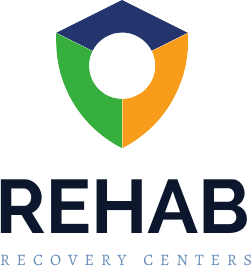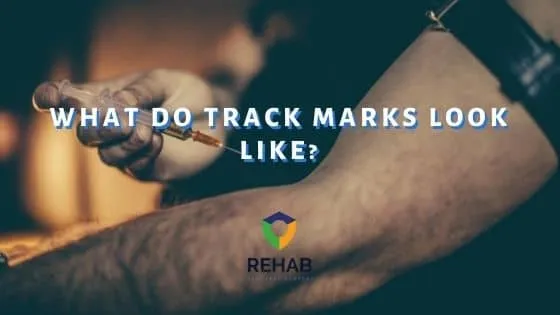Table of Contents
Heroin is one of the most commonly abused drugs in the United States. Heroin addiction is a serious condition that often leads to IV drug use. Injecting drugs intravenously is extremely dangerous, often leading to overdose, blood-borne diseases, and other physical health conditions.
According to the World Health Organization (WHO), 13 million people inject drugs intravenously. Out of those 13 million individuals, 1.7 million people developed a dangerous blood-borne disease known as HIV due to needle-sharing.[1]
Because of the potential dangers of IV drug use, it is important to be able to identify the signs. The easiest way to spot IV heroin abuse is by looking for track marks and being aware of common injection sites.
What Are Track Marks and Why Do They Happen?
Track marks are the puncture wounds and areas of discoloration that occur along a vein that an individual used to inject drugs intravenously. These marks can happen to anyone who abuses IV drugs, however, they are most common in individuals suffering from severe addiction.
Individuals develop track marks because they have damaged their veins due to IV drug use. This occurs because individuals tend to inject heroin into the same spots repeatedly, disrupting the skin’s natural barriers.
Veins are very sensitive, so much so that a simple blood test can leave bruising on an individual for days. Keeping this in mind, repeated injections of drugs like heroin will cause even more physical damage to the individual’s skin and veins.
What Do Track Marks Look Like?
Track marks look like small holes in the skin or puncture wounds and sometimes include bruising or scabbing.
However, the appearance of track marks depends on several factors, including:
- The frequency of IV drug use
- How recently the drugs have been injected
- The sensitivity of the individual’s skin
- Whether the individual has underlying health conditions
Fresh needle marks may have current bleeding or newly dried blood around the puncture wounds. If the marks are older, they might appear bruised or scabbed. Individuals who have been injecting drugs intravenously for a long time may have dry cracked skin around the injection site as well as signs of infection.
The appearance of track marks may include the following:
- Bruising
- Puncture wounds or small holes in the skin
- Scabbing and scar tissue
- Infection at the injection site
- Raised and dark veins
- Dry, cracked skin
When an individual uses the same injection site repeatedly, their veins may become raised and darkened. Over time, they will have to switch injection sites as their skin becomes damaged by scabbing and scar tissue, often causing their veins to be difficult to find. Because of this, there are many different areas of the body where individuals may have needle marks.
List of Common Drug Injection Sites
It is common to find track marks on the arms and hands among individuals who inject drugs intravenously. Track marks on the hands and arms are easy to spot, however, this often causes some individuals to choose different drug injection sites to hide their addiction.
The common drug injection sites include:
- The forearms or crook of the arm
- Hands
- Feet
- In between toes
- Legs
- The neck
- The groin area
The forearms and the crook of the arm are the most common drug injection sites. However, after repeated injections, their veins will collapse and become difficult to find. This causes individuals to look for other drug injection sites to use, often leading them to inject drugs into veins in their legs, feet, neck, and even groin.
Potential Side Effects and Dangers Associated With Track Marks
While we know that IV heroin abuse can cause fatal overdoses, needle sharing, and the development of blood-borne diseases, what are the dangers associated with track marks? Shooting up drugs with a needle can lead to the development of scars, collapsed veins, infections, and even abscesses.
Scars
Repeated injections often lead to the formation of scar tissue. This happens often, as many individuals use the same injection site over and over again. Additionally, many individuals do not let their needle marks heal before injecting in the same spot again.
The scarring associated with IV drug use can be extensive and might even cause the vein to become unavailable for intravenous access in the future.
Collapsed Veins
Repeated injections can cause veins to collapse. Similar to how scarring forms, when individuals do not allow their veins to heal before injecting in the same spot, the veins become unable to allow normal blood flow. This is what causes collapsed veins to form, which often leads to pain, inflammation, or swelling.
Infection
The risk of infection associated with IV drug use is high. Oftentimes, individuals reuse dirty and dull needles or share their needles with other drug users. This can lead to an array of infections, including dangerous bacterial infections and life-threatening blood-borne diseases like HIV/AIDS.
Abscesses
If an individual develops a bacterial infection and is unaware, they may develop an abscess. Abscesses are swollen and tender bumps that are extremely painful and warm to the touch. Typically, abscesses will not heal without antibiotics to treat the underlying infection and even surgical abscess draining procedures.
Find Help for IV Drug Abuse and Addiction Today
Individuals who inject drugs intravenously require professional addiction treatment. If you are worried that your loved one is an IV drug user, you may notice track marks on the arms accompanied by scabbing and scar tissue. If so, it is important that they receive professional addiction treatment for IV drug abuse.
At Rehab Recovery Centers, we can help you or your loved one find the help you need. Contact us today for more information on how to find help for IV drug abuse and addiction.
References:
Get Help Today
Don’t go through the process of recovery alone. There are people who can help you with the struggle you’re facing. Get in touch with one today.


